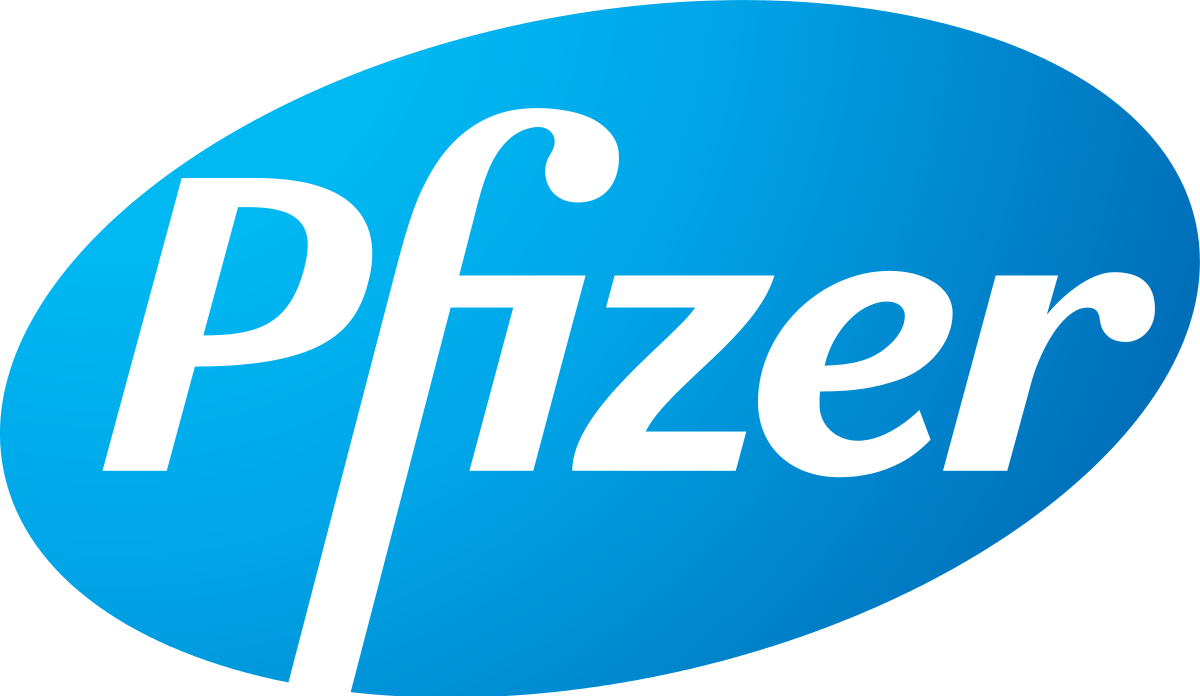辉瑞制药公司(PFE.US)2025年第一季度业绩电话会
文章语言:
简
繁
EN
Share
Minutes
原文
会议摘要
Pfizer reported a 6% operational decline in revenue for Q1 2025, attributed to lower Paxlovid revenues and IRA Medicare Part D redesign impacts, offset by growth in other products and international markets. The company emphasizes strategic priorities including enhanced R&D productivity, pipeline advancement, maximizing product value, and improving operating margins. Key therapeutic areas highlighted include oncology, vaccines, and internal medicine, with a focus on addressing significant patient needs through differentiated approaches. Financial results show an adjusted gross margin expansion to approximately 81%, a 12% decrease in adjusted operating expenses, and a commitment to value-creating innovation and pipeline strengthening. Pfizer's cost improvement programs aim for operating margin expansion, leveraging digital capabilities and simplifying business processes, setting the stage for balanced capital deployment.
会议速览
Welcome to Pfizer's first quarter 2025 earnings conference call, featuring updates from the company's leadership, including the chairman and CEO, and the CFO. The call discusses financial results, forward-looking statements, and non-GAAP financial measures, with a reminder about the risks and uncertainties involved.
The company highlights its strong Q1 performance and strategic priorities, emphasizing R&D enhancement, pipeline productivity, maximizing key product values, and improving operating margins. It underscores a disciplined approach to managing the development portfolio, focusing on potential blockbuster assets, and intensifying commercial assessments. The announcement of discontinuing a candidate demonstrates commitment to portfolio prioritization. The focus shifts towards building the cardiometabolic pipeline, including obesity, through internal programs and potential external partnerships or acquisitions. Leadership changes in R&D, particularly in oncology, vaccines, and inflammation immunology, are noted with new appointments bringing extensive experience and expertise. The company anticipates a strong year with significant pipeline catalysts in 2025.
The company is progressing towards multiple key milestones, including regulatory decisions, phase 3 readouts, and pivotal program starts, particularly focusing on a potential treatment for BCD naive high-risk non-muscle invasive bladder cancer. Encouraging results from the phase 3 trial of sasta Lima in combination with BCD, the current standard of care, were presented at the American Neurological Association meeting. Urologists show preference for subcutaneous Pdr 1 for its convenience in practice. Additionally, the company anticipates meaningful outcomes for pati and lrec papcio, aiming to double the addressable patient population for locally advanced metastatic urophilia cancer in the US with potential registrational interim data from ongoing studies in muscle-invasive bladder cancer, and expand treatment to a broader population of patients with multiple myeloma.
The company anticipates pivotal studies for treatments in multiple myeloma, head and neck squamous cell carcinoma, non-small cell lung cancer, and IBC expressing tumors, aiming to double the addressable population and potentially change care standards. Additionally, plans include a registrational study for a fourth-generation PCV vaccine candidate and progress with a fifth-generation candidate, targeting over 30 serotypes, to strengthen their market leadership. Accelerated development is also noted for a study addressing menstrual migraine.
The company has separated its US and international operations to prioritize impactful products, leading to operational growth and strong performance in key projects like the ventricular family, Ntek, Fase, and Lobrano. Notably, the oncology portfolio, including PSE and Brenna, shows significant growth, driven by increased market share and strong adoption.
The healthcare company reports a 42% operational growth for cbio, emphasizing increased patient access and expansion of key brands. Despite a 6% operational revenue decline primarily due to lower paxlovid revenues, the company records strong financial results, including a diluted EPS of 52 cents and adjusted diluted EPS of 92 cents. Key strategies include improving cash flows, reducing debt leverage, and enhancing cost management. The company highlights growth in products like Vindicate, comity, hatsa, nert, and labrea, while noting declines in paxlovid, eliquis, zelg s, and ibrance. Operational expenses decreased by 12%, driven by productivity improvements and pipeline optimization.
The company reported Q1 adjusted diluted earnings per share of 92 cents, benefiting from efficient operations and favorable tax resolutions. The capital allocation strategy focuses on enhancing shareholder value through dividend growth, R&D investment, and share repurchases. In Q1, $2.4 billion was returned to shareholders via dividends, $2.2 billion invested in R&D, and business development activity was minimal. The company achieved its 3.25 gross leverage target, improved cash position through the monetization of Halion investment, and fully exited ownership in Halion. The objective is to deleverage the balance sheet, supporting a balanced capital allocation between reinvestment and shareholder returns, with a focus on long-term margin improvement.
The company expects to achieve $7.7 billion in savings by 2027 through its manufacturing optimization program, digital tools, automation, AI, and R&D efficiency improvements. Despite navigating complex global trade landscapes, it maintains its 2025 revenue and earnings guidance, emphasizing value creation through product portfolio maximization, innovation, and balanced capital deployment.
An investor inquires about the company's commitment to maintaining and growing dividends despite potential impacts from tariff uncertainties and increased business development activities.
The speaker discusses the stability of the Covid business relative to the previous year, noting that vaccine sales will occur later in the year. They emphasize the importance of the dividend as a critical component of the capital allocation strategy, highlighting improved operating margin and cash flow yield.
Paxlovid utilization closely follows infection rates, with a 50% treatment rate and an 80% in-rate during infections. Despite lower winter wave, over 750,000 patients were treated, aligning with business expectations. The company anticipates two COVID waves annually, planning execution based on these cycles. Transitioning Medicare path patients out of USG into the traditional Medicare model began on March 1. Internationally, the company exceeded consensus by $130 million, driven by execution in the UK, Europe, and Japan. Vaccination campaigns are set to start in 2000 new year countries, notably in Brazil, where a two-year contract for adults was secured. Commercial sales are now associated with utilization in 49 markets, indicating a need for increased utilization and treatment internationally.
The discussion highlights the discontinuation of a particular obesity asset due to potential drug-induced liver injury risks. Despite this, the focus remains on advancing the pipeline for differentiated oral medicines in obesity and cardiovascular metabolic diseases, emphasizing tolerability, accessibility, and convenience. The future strategy involves personalized treatments addressing specific diseases associated with obesity and metabolic dysfunction, exploring the potential of incretins and other targets beyond cardiovascular medicine for broader therapeutic opportunities.
The discussion highlights concerns over potential sector-specific tariffs, particularly within the pharmaceutical industry, and the use of Section 232 investigations related to national security threats. The speaker notes the administration's focus on ensuring critical medicines are not produced in countries with high tensions, emphasizing ongoing productive discussions to address these concerns.
The discussion covers the likelihood of Mfn legislation in Washington, emphasizing recent executive orders focusing on pharmaceutical costs and reforms. Additionally, it addresses the utilization percentage of US pharmaceutical plants, highlighting the importance of excess capacity in the industry's advantage.
The company discusses its significant manufacturing capacity for injectables in the U.S., potential offsets for LOEs through Opex cuts, maintaining net income levels, and commitment to dividend amidst tariff impacts. The distinction between friendly and unfriendly countries in the context of pharmaceuticals is also questioned.
The company aims to improve operating margin performance over time, leveraging technology and productivity enhancements. Despite potential losses, they are committed to growing the dividend and maintaining R&D investment levels, aiming for a $7 billion annual target by 2027. Cost reductions are achieved through AI and business simplification, with careful consideration to preserve valuable resources. The speaker also addresses the uncertainty around tariffs, noting that national security concerns are not typically associated with friendly countries.
Pfizer reports a strong start to the year, maintaining its 2023 guidance range while acknowledging uncertainties in the macro environment. The company focuses on improving gross and operating margins, with strategic priorities including managing the impact of upcoming patent expirations (ELOIs) through new product launches and business development, particularly targeting assets with growth potential post-ELOIs.
The company is intensifying its focus on improving margins and enhancing R&D productivity to drive EPS growth, expecting its pipeline to mature and contribute significantly over the next three years. With $10 to $15 billion allocated for capital, the strategy includes prudent investment and multiple expansion, supported by a strong emphasis on cost control. Additionally, the potential for increased investment in the U.S. is discussed, contingent on favorable tariff and tax conditions.
The company announces an additional $1.2 billion in cost savings by 2027, with most savings expected in 2026 and 2027. Despite exceeding savings targets, they reiterate their guidance. Regarding business development, they're attentive to the macro environment and leverage market volatility as an opportunity to strategically engage in external opportunities, noting that while valuations are low, sellers' willingness to adjust varies.
The company addresses questions regarding the proportion of US drug sales, the effect of currency fluctuations, and the $650 million dampening of US revenues due to Medicare Part D redesign. They also anticipate a $150 million impact from tariffs in 2025, factored into their guidance range.
Amidst tariff uncertainties, a company outlines its contingency plans to minimize impacts on bottom-line earnings, highlighting manageable effects with mitigation strategies. Discussions also cover recent Phase 3 data for a new drug, emphasizing its statistically significant and clinically meaningful outcomes in a specific patient population, with plans for regulatory filings and further development.
There's significant concern over the current Washington administration's approach to the biotechnology sector, with perceived support for traditional technology sectors but a degrading stance towards biotech, including reduced investments and NIH funding. The dialogue also addresses the ongoing 232 investigation, which examines potential national security risks associated with the U.S. supply chain for medicines and biotech processes, highlighting the urgency for the U.S. to maintain its scientific dominance in biotech amid China's rapid advancements.
The discussion focuses on the pharmaceutical industry's strategy to relocate API and drug substance manufacturing to the US or allied countries for national security, considering the multi-year process involved. It also addresses measures taken to mitigate risks, such as increasing inventory in the US. Additionally, the conversation highlights the company's pipeline strategy, including accelerating phase 3 programs and potential new opportunities in oncology and internal medicine, with an emphasis on providing clear, regular updates to stakeholders through various communication channels.
The speaker discusses the competitive dynamics in the Vinda market, noting a strong start to the year with 31% revenue growth, driven by improved diagnosis rates, access, and new patient starts. They acknowledge the impact of competition, particularly from Truvia, and the monitoring of Abura's market entry. International markets for Vinda are also noted to be growing healthily.
The company experienced a 36% growth, exceeding analyst expectations, attributed to a 52% increase in treated patients. Key drivers include expanding diagnosis rates, a differentiated clinical profile, and recently achieved reimbursement access in 46 markets, with Korea added in March 2025. Additionally, an in-house discovered oral small molecule GIP antagonist is in phase 2 studies, potentially offering new obesity treatment combinations by 2026.
The speaker discusses the progress of two Adcs in phase 3 trials for non-small cell and neck treatments, highlighting their quick advancement due to strong phase 1 results. They also mention the upcoming phase 3 trial for c diff, addressing a significant unmet medical need. Other notable projects include a Cdk 4 therapy, building on the legacy of ibrance, and aiming for better tolerability and efficacy in a large market. The speaker notes the potential for substantial revenue from supportive care therapies and expresses optimism about narrowing the gap between internal expectations and street modeling forecasts. They conclude by mentioning a solid Q1 performance, despite the impact of IRA, and express confidence in the team's ability to translate operational success into shareholder value.
要点回答
Q:What is the focus of the new pipeline development strategy in R&D?
A:The focus of new pipeline development strategy in R&D is to improve R&D productivity and advance the pipeline with a sharpened focus, intensifying rigorous commercial assessment and portfolio prioritization from early clinical development. This involves being disciplined in managing the portfolio and directing investments towards potential blockbuster or mega blockbuster assets.
Q:What are the anticipated pipeline catalysts for 2025?
A:Anticipated pipeline catalysts for 2025 include at least four regulatory decisions, up to nine phase 3 readouts, and significant starts for pivotal programs, especially in oncology. Notable developments include potential treatment advancement for non-muscle invasive bladder cancer and continued progress with sasta lima in combination with BCD, as well as other studies for pati and lrec papcio, pdr1 V, and SV.
Q:What are the potential expansion opportunities for the oncology pipeline?
A:Potential expansion opportunities for the oncology pipeline include the phase 3 readout for Re in a study for double class exposed relapsed refractory multiple myeloma, the potential to more than double the addressable population in the US for vas with potentially registrational interim data from ongoing pivotal studies, and initiating pivotal studies for PDL 1 V and SV in first and second line therapies.
Q:What are the plans for the non-ss small cell lung cancer and vaccines therapeutic areas?
A:Plans for the non-ss small cell lung cancer therapeutic area include targeting this substantial area of unmet need with the potential to treat the most frequently diagnosed cancer globally. For vaccines, the plans include enhancing and augmenting their strong market positions, conducting potential registrational studies in adults later in the year with their fourth and fifth generation PCV and VI candidates.
Q:What is the focus of the commercial strategy and performance in 2025?
A:The focus of the commercial strategy in 2025 is to separate US and international operations, refine the commercial model to strategically prioritize impactful products, and improve operational execution. This strategy has led to operational growth in the first quarter across all parts of the division and strong performance in key categories such as the ventricular family, nte, fase, and lobrano.
Q:How are the financial results reflective of execution and what are the expectations for cash flows and debt leverage?
A:The financial results demonstrate strong execution, focusing on driving positive patient outcomes and delivering on financial commitments. Going forward, expectations are to improve cash flows, reduce debt leverage, and have more flexibility for capital allocation. The focus remains on creating long-term shareholder value, investing in the business, and prudently returning capital to shareholders.
Q:What is the impact of the recent past on revenues and diluted earnings per share in the first quarter of 2025?
A:The impact of the recent past on revenues and diluted earnings per share in the first quarter of 2025 was a decline in revenues primarily due to lower paxlovid revenues, changes in the Medicare Part D redesign, and product mix. Adjusted diluted earnings per share of 92 cents benefited from an efficient operating structure and favorable tax resolutions, resulting in an overall growth in earnings despite the decline in revenues.
Q:What were the financial outcomes of the company's Q1 operations in terms of dividend, investment in R&D, and business development?
A:In Q1, the company returned $2.4 billion to shareholders via a quarterly dividend, invested $2.2 billion in internal R&D, and completed minimal business development activities.
Q:What are the objectives of the company's operational expense management?
A:The company is disciplined in operational expense management and is focused on driving long-term margin improvement.
Q:What are the company's plans for productivity and operational efficiency in its R&D organization?
A:The company plans to drive improvements in productivity and operational efficiency in its R&D organization through enhanced digital enablement and automation, aiming for $500 million in savings to be realized by the end of 2026, with the savings reinvested within the R&D program.
Q:What are the updated guidance figures for the company's full year 2025 revenues and adjusted diluted earnings per share?
A:The company's updated guidance for full year 2025 revenues is in the range of $61 to $64 billion, and for adjusted diluted earnings per share is in the range of $2.80 to $3.00, reflecting strong contributions across the product portfolio and ongoing cost management.
Q:What is the impact of the ongoing pandemic on the company's business, particularly in regard to Paxlovid?
A:Paxlovid utilization closely follows infection rates, with a high treatment rate when infections are prevalent. The company has set up a robust commercial model and anticipates seasonal utilization consistent with previous years despite a lower winter wave. They also plan to transition patients from the Medicare pathway to traditional Medicare models effectively.
Q:What are the company's expectations regarding vaccine sales and market expansion?
A:The company expects to ship vaccines to 2000 new market countries where vaccination campaigns are starting, particularly in Brazil. In the international community, they aim to improve utilization and treatment in markets where the company has low utilization compared to the U.S.
Q:What are the company's considerations and priorities in terms of potential assets for obesity?
A:The company's priorities for potential assets in obesity include advancing their pipeline of differentiated oral medicines, emphasizing global capabilities, and focusing on tolerability, accessibility, and convenience. They aim to address specific diseases associated with obesity and metabolic dysfunction, including neurology, cardiovascular, and respiratory aspects.
Q:How does the company view the potential impact of sector-specific tariffs on its operations?
A:The company acknowledges the potential for sector-specific tariffs and believes it could be related to a 232 investigation due to national security concerns. They are in discussions with relevant government officials and remain optimistic about addressing these concerns successfully to minimize disruption to operations.
Q:What are the unique insights into the thinking in Washington regarding Mfn legislation?
A:Albert has observed that the President issued an executive order focusing on very expensive pharmaceuticals and mentioned topics like the pill panel, PBM reform, and the 340B program but did not mention Mfn legislation. This suggests that the priorities of the administration are focused on PBM reform, cost reduction for patients, and other mentioned topics rather than Mfn legislation.
Q:What is the potential impact of Mfn legislation on the utilization of US plants?
A:The potential impact of Mfn legislation on the utilization of US plants is uncertain since the President's executive order does not mention Mfn. However, there is significant manufacturing capacity in the US, particularly for injectables, and the ability to transfer production if needed exists without the need for new facilities.
Q:What does the executive order issued by the President indicate about the priorities of the administration?
A:The executive order issued by the President focuses on very expensive pharmaceuticals and involves topics like PBM reform and the 340B program. These focus areas indicate that the priorities of the administration are centered around patient costs, pharmaceutical affordability, and specific programs like 340B rather than Mfn legislation.
Q:What is the impact of potential Opex cuts on net income, especially considering the upcoming pressures?
A:The impact of potential Opex cuts on net income is significant, as the company can maintain or improve net income levels despite upcoming pressures. They are focused on improving operating margins and have introduced technology and business simplification to achieve cost reductions without across-the-board reductions.
Q:Is the company confident in maintaining or improving its operating margins despite potential challenges?
A:The company is very confident in maintaining or improving its operating margins. They have been working on improving productivity and are focusing on technology-driven solutions that have secured cost reductions. They have set clear targets and are confident they will exceed them by 2027. Additionally, they are focused on not reducing valuable resources but on deploying technology to ensure cost savings and business simplification.
Q:Is there a change in the guidance for full year gross margins, and what is the level of conservatism in the current guidance?
A:There is no change in the guidance for full year gross margins. The company is confident in their outlook and has started the year off strongly. They are cautious about the macro environment but remain focused on improving gross and operating margins over time. As of now, they are not seeing any need to revise their guidance based on the current performance and expectations.
Q:What is the priority in the strategy for multiple Bd options and how has the macro backdrop evolved?
A:The priority in the strategy for multiple Bd options is a combination of approaches, including the timing of new product launches, business development, and focusing on R&D productivity. The macro backdrop has evolved with upcoming losses of exclusivity (LOEs) starting in 2026-2028, which will be offset by new launches and business development. The company is focusing on R&D studies that are moving to phase 3 and anticipate a pipeline that will lead to growth beyond 2028.
Q:What incentives would be necessary in tariff negotiations to encourage increased manufacturing investments in the US?
A:Incentives necessary in tariff negotiations to encourage increased manufacturing investments in the US would include certainty and reductions in current tax rates, especially for locally produced goods. A stable tax environment and potential for lower taxes would be critical incentives to attract manufacturing back to the US.
Q:What are the expectations for R&D investment and cost savings?
A:The company is on track to meet the R&D cost reduction goal of $500 million by reinvesting the savings in R&D late this year or possibly extending into next year.
Q:What factors influence the current valuation environment for biopharmaceutical companies?
A:The valuation environment for biopharmaceutical companies is currently low and uncertain, with the market adjusting to new valuations. It takes time for the market to adjust in categories with increasing therapeutic density and assets, mainly coming from China. Additionally, an external environment where companies are more amenable to lower valuations is a contributing factor.
Q:How does the company view the potential of a trade war on its operations?
A:The company is strategic and cautious regarding potential trade issues, having been burned in the past. They have detailed contingency plans to minimize the impact of tariffs, focusing on not having tariffs and trying to implement measures if necessary. The company is closely watching developments but remains optimistic that they will not need to rely on these contingency plans.
Q:What is the impact of currency fluctuations on the company's financials?
A:Currency fluctuations have had a limited impact on the company's financials in the first quarter. Despite volatility, the impact of foreign exchange is considered immaterial, and the company expects to offset the dampening effect of Medicare Part D redesign in the back half of the year with incremental prescriptions. Tariffs are anticipated to be approximately $150 million for 2025 and are already contemplated within the company's guidance range.
Q:What is the status of the FDA's Grand Bargain initiative?
A:The speaker is not aware of Scott Gottlieb's comments on the 'Grand Bargain' and has not discussed this initiative with him recently. However, they are engaged in ongoing discussions with the administration regarding various issues.
Q:How does the company perceive the progress of the 232 investigation?
A:The 232 investigation is focused on assessing potential national security risks in the availability and supply chain of medicines in the U.S. The process involves the submission of information by various interested parties, and the time frame for completion is set within 70 days, which the administration is likely to meet or exceed. The company is engaged in providing information as part of this process.
Q:What is the feasibility of bringing API manufacturing to the U.S. and how does the administration plan to assess this?
A:The administration is focusing on the entire value chain, which includes APIs and the manufacturing locations, assessing the risk based on where products are made. This process is considered national security-related and is likely to focus on a manageable number of products. It is described as a multi-year process, and the administration is looking to ensure security while allowing certain investments for the most important products.
Q:What are the strategies being implemented to ensure inventory levels are sufficient in the U.S.?
A:The strategies implemented to ensure sufficient inventory in the U.S. include adjustments to make the company well-positioned regardless of any scenario, as mentioned by Chris. The company has been increasing its inventory position monthly to prepare for potential challenges.
Q:Can you list the new products that are expected to be read out this year and their potential patient impacts?
A:New products expected to be read out this year include MAA, which if positive, could triple the patient population, and Atezolizumab, which could double the population, potentially including up to 38,000 patients eligible in the U.S. Additionally, several phase 3 programs are accelerating and are set to start later this year through the next 6 to 9 months, including for oncologists.
Q:What is the anticipated timeline for new data related to the internal oral Ki agonist?
A:The timeline for new data on the internal oral Ki agonist is not specifically detailed in the transcript, but it is mentioned that the company is working on providing visibility on their data without undermining publications, suggesting a cautious and incremental release of information.
Q:What is the competitive dynamic in the U.S. market for the company's products?
A:The competitive dynamic in the U.S. market is mentioned to be playing out positively, as the company has grown revenue by 31% in the new year. This growth is attributed to improvements in diagnosis rates, strong new patient starts, and continued compliance with existing patient base. Although there is impact from competition, particularly from Truvia, the company is confident in its execution and growth trajectory for the remainder of the year.
Q:How is the company performing in the international market?
A:In the international market, the company is experiencing strong growth, with a 36% increase in revenue compared to the prior quarter. This growth is driven by a significant increase in the treated population, reaching a 52% growth in patients treated with Vnda in Q1 versus Q1 last year. The company anticipates this trend will continue due to potential expansion in diagnosis rates, a differentiated clinical profile, and access to reimbursement in 46 markets, including Korea.
Q:Can you provide details on the oral small molecule GIP antagonist discovered in-house?
A:The oral small molecule GIP antagonist discovered in-house is potentially a first-in-class medication. It is currently in a phase 2 study for treating obesity in combination with a GLP-1 receptor agonist. The phase 2 study results are expected to be available from late 2025 onwards, potentially leading to weight loss benefits both with internal or external opportunities.
Q:What is the disconnect between the company's projections and analysts' forecasts for future products?
A:The disconnect between the company's projections and analysts' forecasts is primarily due to the quick progression of two Adcs into phase 3 trials without phase 2 studies being adequately covered by analysts. Also mentioned is a lack of focus on certain studies that could drive significant value, such as those with substantial unmet medical needs and potential revenue impacts. The company looks forward to narrowing the gap as more data becomes available.
Q:Where do the biggest discrepancies lie between the company's internal expectations and analyst models for the upcoming phase 3 readouts?
A:The biggest discrepancies lie with analysts underestimating the company's internal expectations for certain phase 3 readouts. The company hints at significant unmet medical needs and potential market sizes but does not specify which readouts or how substantial the gaps are in analysts' forecasts.

Pfizer Inc.
Follow





